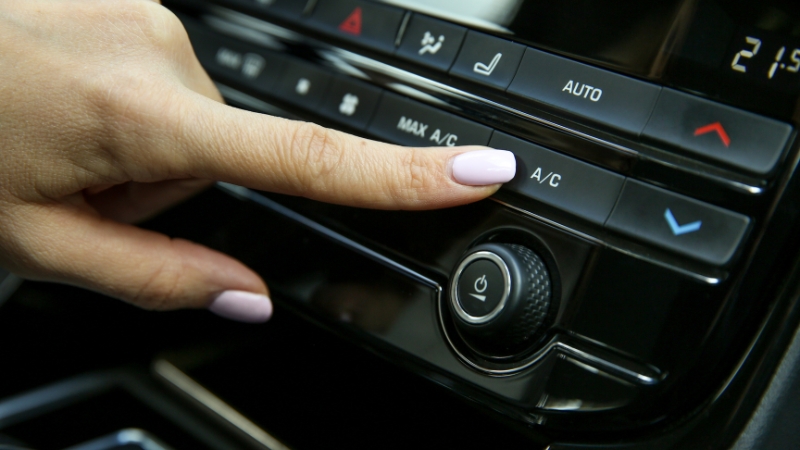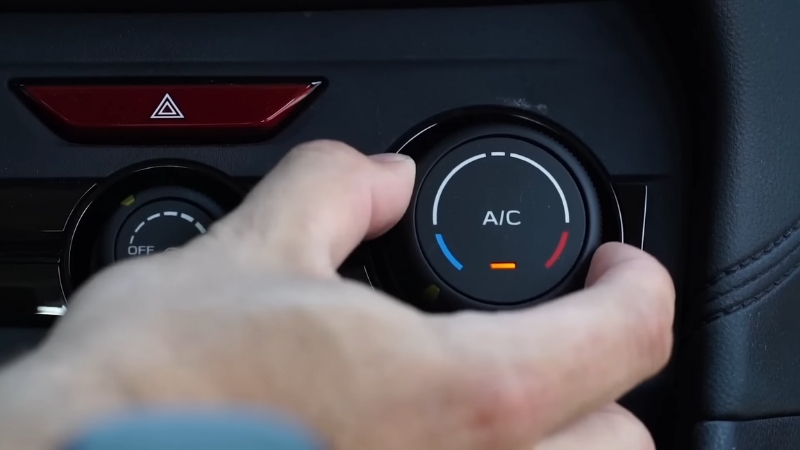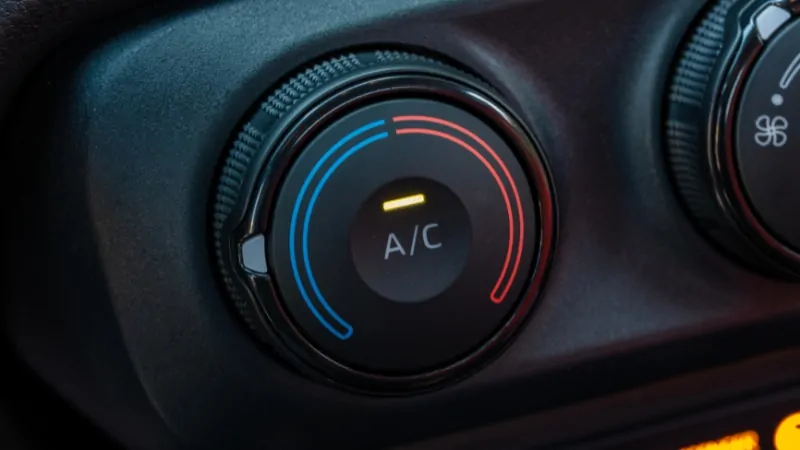The short answer: yes, your car’s air conditioning system can harm your health if it is poorly maintained, used improperly, or if you’re exposed to it for long periods in a confined space without fresh airflow.
While air conditioning itself isn’t inherently dangerous, the way it functions and the environment it creates in your vehicle can lead to several physical health issues, particularly respiratory problems, bacterial infections, skin and eye irritation, and fatigue.
The biggest health risks come from mold growth inside vents, sudden temperature changes, and prolonged exposure to recirculated air containing allergens or pollutants. Fortunately, most risks are preventable with regular maintenance and informed usage.
Table of Contents
ToggleKey Takeaways
5 Hidden Health Risks of Car A/C

1. Mold and Bacteria Buildup in the A/C System
Mold thrives in the dark, damp areas of your car’s ventilation system, especially if you frequently use the A/C and rarely service the system.
- Main Risk: Inhaling mold spores can cause respiratory problems, especially for people with asthma, allergies, or weakened immune systems.
- Typical Symptoms: Sneezing, coughing, wheezing, irritated eyes, chronic fatigue, or sinus infections.
Factor
Risk Level
Explanation
Dirty air filters
High
Accumulate allergens and mold, reducing air quality
Evaporator coil moisture
High
Encourages mold and mildew growth
Irregular service
High
Allows the buildup of harmful contaminants
A 2022 study by the International Journal of Environmental Health Research found that over 36% of car A/C systems in urban areas had detectable mold contamination after just 12 months without cleaning.
2. Recirculated Air and CO₂ Buildup
When your A/C is set to recirculation mode (a common setting), it repeatedly pulls air from inside the car rather than bringing in fresh air from outside. While this cools the cabin faster, it can raise CO₂ levels, especially during long drives with passengers.
- Main Risk: Elevated CO₂ can reduce alertness and cause drowsiness, increasing accident risk.
- Typical Symptoms: Headache, reduced concentration, fatigue.
Driving Condition
CO₂ Level (ppm) After 30 Minutes
WHO Safe Limit
Fresh air mode
~800 ppm
<1000 ppm
Recirculation mode, 2 people
~1800 ppm
Exceeds
Recirculation mode, 4 people
2500–3000 ppm
Significantly exceeds
A 2019 study by the NCBI found that CO₂ levels in recirculation mode rose above safe thresholds within 20–30 minutes, particularly in smaller vehicles.
3. Sudden Temperature Changes and Thermal Shock

Cranking up the A/C when it’s hot outside might feel good, but this sudden shift in temperature puts strain on your body.
- Main Risk: Sudden cold air can constrict blood vessels and irritate the respiratory tract.
- Typical Symptoms: Sore throat, muscle stiffness, blood pressure spikes, or respiratory irritation.
External Temp
A/C Setting
Cabin Drop (°C) in 10 Minutes
Risk Zone
35°C
Max cold
14°C
High (can cause shock to the sinuses and airways)
30°C
Moderate
8°C
Medium
25°C
Mild
5°C
Low
According to the European Respiratory Society, abrupt changes in ambient temperature can increase the risk of respiratory infections by up to 25%, especially in enclosed environments like cars.
4. Dry Air and Dehydration
Cold air from the A/C is also very dry. Long exposure can dry out the skin, eyes, and mucous membranes, reducing your natural defenses.
- Main Risk: Chronic exposure causes dry eyes, sinus inflammation, or even respiratory tract issues.
- Typical Symptoms: Itchy skin, dry eyes, frequent throat clearing, and increased thirst.
Exposure Time
Relative Humidity Drop
Common Symptom
30 minutes
20–30% reduction
Dry nose, eyes
1–2 hours
>40% reduction
Sinus tightness, fatigue
3+ hours
Up to 50% loss
Dehydration symptoms
The American Academy of Dermatology warns that environments with humidity below 30% (common in A/C-cooled cars) increase skin dryness and eye irritation significantly, especially during long commutes.
5. Chemical Exposure from Coolants or Leaks
Poorly maintained A/C systems may leak refrigerants, which are harmful when inhaled over time. Some older vehicles still use R-134a, a chemical with known environmental and mild toxicity concerns.
- Main Risk: Inhalation of refrigerant fumes can irritate the lungs or cause neurological symptoms.
- Typical Symptoms: Dizziness, shortness of breath, confusion, or nausea.
According to the EPA, exposure to high concentrations of R-134a refrigerant can reduce oxygen supply to the brain, especially in unventilated areas like sealed cars.
Signs Your Car A/C Might Be Harming You
How to Use a Car A/C Without Harming Your Health

To stay cool without compromising your well-being, it’s essential to use your car’s air conditioning system with intention rather than habit. One of the simplest but most effective strategies is to alternate between recirculation mode and fresh air mode every 15 to 20 minutes.
While recirculation helps your cabin cool faster and keeps outside pollutants out, using it continuously leads to an unhealthy buildup of carbon dioxide, especially when more than one person is in the car. Periodically switching to fresh air mode brings in oxygen-rich air and prevents that drowsy, heavy feeling that can develop during longer drives.
Another key step is to replace your cabin air filter regularly, ideally every 12,000 to 15,000 kilometers, or as recommended in your vehicle’s manual. This filter is your first line of defense against airborne particles such as mold spores, dust, pollen, and smog.
If left unchanged, it not only clogs the system but also allows harmful particles to recirculate into the air you breathe. You may not see the filter, but neglecting it can lead to serious respiratory irritation over time.
You should also have your A/C system’s ducts and evaporator coils cleaned every 6 months. These areas are moisture traps and provide a perfect habitat for mold and bacteria.
For those seeking a more thorough clean, choosing professional car care services like Grandeur Autos can ensure your ventilation system is sanitized properly, removing hidden contaminants and extending the life of your A/C components.
Avoid blasting cold air the moment you start your car. Instead, begin with a mild setting and allow the cabin to cool gradually. Sudden exposure to cold air after walking in from the heat can shock your respiratory system and trigger muscle stiffness or even blood pressure spikes in vulnerable individuals.
@aprokodoctorHow your Car AC is affecting your health. Share this video with other people to help them. You might be saving a life.♬ original sound – aprokodoctor
Gradual cooling gives your body a chance to adjust and reduces thermal stress on your system.
If the temperature outside is tolerable, consider using your A/C in shorter intervals. Constant use not only dries out the air inside your car but also dehydrates your skin, eyes, and mucous membranes, especially during long commutes. Give your system a break when you can, and allow some natural ventilation, especially in moderate weather.
Before turning on your A/C, open the windows for a minute or two. This simple habit helps flush out stale air that may contain trapped pollutants, volatile organic compounds (VOCs) from upholstery, or high CO₂ levels from previous trips. Letting in fresh air before sealing up the cabin improves initial air quality and makes the A/C work more efficiently.
Finally, during routine servicing, ask your mechanic to apply a special anti-bacterial treatment to the ventilation system. These treatments are designed to kill mold, mildew, and bacteria deep within the vents and evaporator.
They’re inexpensive, take only a few minutes to apply, and can significantly reduce your exposure to harmful microbes, especially in older vehicles or ones that are frequently used in humid conditions.
Related Posts:
- The 8 States With the Highest Car Accident Fatality…
- Car Seat Laws by State - Age and Size Requirements…
- What Happens to Your Data in Large Health Surveys
- Health Insurance Coverage - National Health…
- How a Post-Master's FNP Certificate Can Transform…
- Living Alone in Your 70s or 80s - Is It Worth the Risk








